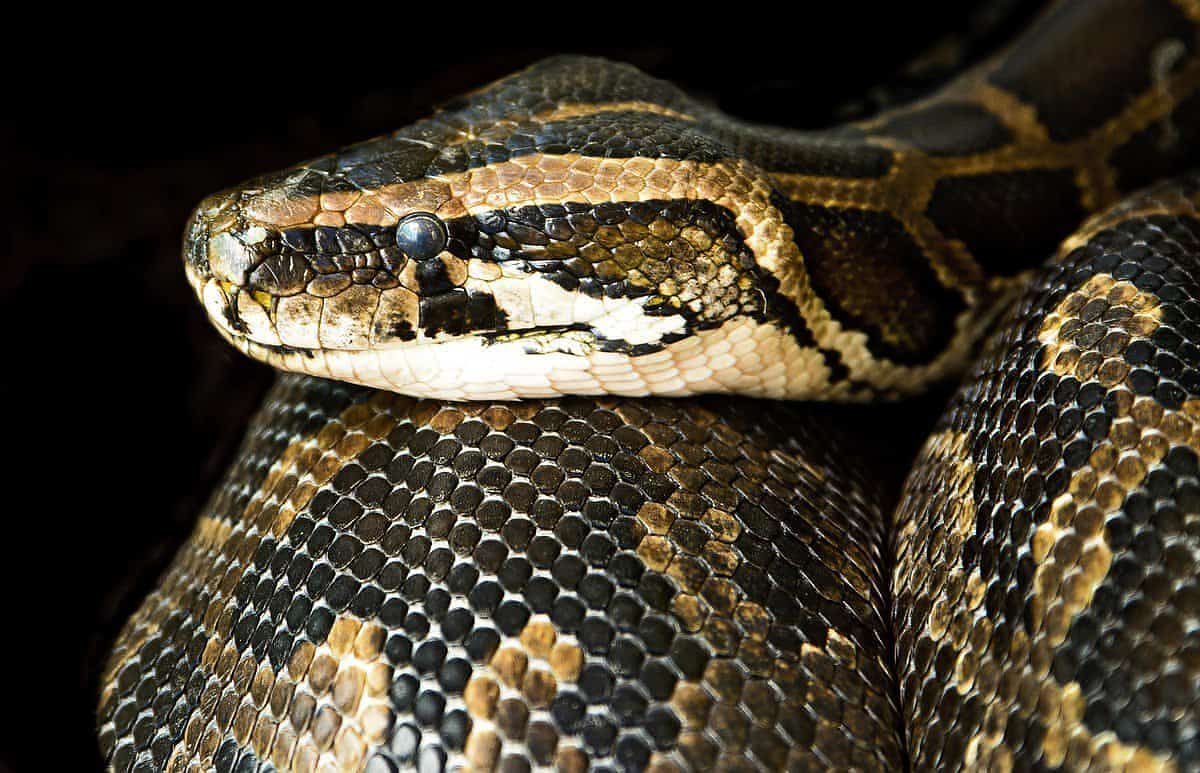I saw something from the corner of my eye as I was walking to my car, past the bamboo-laden pacific screech owl enclosure, that made my brain say ‘snake head.’ I stopped in my tracks, returned to the enclosure and looked at the earthen floor. There was a two-inch circular hole in the ground, probably from a tarantula, but nothing that resembled a snake head.
Now I have a decision to make. It’s closing time at the wildlife rehabilitation center, and I’m the only one left on the property. All the animals have eaten, the dishes have been washed, the doors have been locked, and it’s time to go home.
Do I listen to that brain whisper and start investigating the owl cage for a snake, or do I head home after a long day? Afterall, it’s already five-something in the afternoon, and the shadows are getting long under the trees that dot the landscape of the rescue center.
I look up at the two pacific screech owls sitting side-by-side on a branch in the center of the enclosure, and they peer back at me (real angry because owls always look kind of peeved). I think of the months I had spent raising them from puff-balls in a bucket to now, full-fledged adults, and realize that I’m about to crawl around the floor of an owl cage instead of going home.
I unlock the enclosure and begin to slowly inspect the cage while trying not to spook the owls into hurting themselves.
There’s no snake.
There is, however, a hole that, if I were a snake, I’d hide in until it got dark and then sneak out and eat two pacific screech owls.
So I formulate a plan. I’ll flush it out with water and when it pops out of the hole, I’ll grab it. I put on leather gloves, get the loop-on-a-stick that dogcatchers use to catch dogs in cartoons, and fish a garden hose through the wall of the cage.
This should be easy – I’ll put the wire loop of the dogcatcher pole around the hole, then I’ll stick the hose in the hole and turn it on. When the hole fills up and the snake can’t breathe, it’ll pop its little snake head out of the hole. Then I’ll pull the wire on the end of the dogcatcher pole and boom!, I’ll have a snake.
Here we go. I turn on the hose. And wait. The hose is on full blast but no water is backing up out of the hole. So I wait longer. I pull the hose up out of the hole to see if a snake head pops out, but nothing happens. How deep is this hole?
I peer over my shoulder at the owls, and they’re angrily looking at me from the opposite corner, clearly unhappy with everything that’s happening. As I’m looking around, some movement directly behind me catches my eye. The snake!
I turn and it’s not the snake, but instead a steady stream of water bubbling up out of a second hole, directly behind me that I didn’t know about. The stupid snake probably scooted out of that hole, avoiding the water, and I didn’t even see it.
I need to reinspect this cage now; it could be anywhere. So I turn my attention back to the original hole and pull the hose out. As the end of the hose pulls out of the tarantula hole, it is followed directly by a boa constrictor’s head. It sticks straight out of the hole about a foot in the air, I say something like ‘Whaaa!’ and I pull the wire end of the dogcatcher pole.
I just caught a snake!
Kind of. It’s already contracting its body and starting to slide its way out of the wire loop and back into the hole.
I can tell the dogcatcher pole isn’t going to work because I’m afraid to tighten the loop too much because I don’t want to injure the snake, so I just grab the snake behind the head with a leather-glove-clad hand, loosen the wire loop and toss the dogcatcher pole.
Now, I’m sitting alone on the floor of an owl cage, in an ever-growing muddy puddle because the hose is still on, holding the head of a boa constrictor that’s still mostly underground in a tarantula hole. At this moment, I wanted to yell something like ‘Help!’ or ‘Can somebody give me a hand with this snake?’ but nobody was there.
So I throw off both gloves, one at a time while switching snake-hands, because the snake was all muddy, and I was losing my grip. So now barehanded with both hands on the snake, I get up on my knees and pull.
I know how strong snakes are and I’m not expecting great results from this tactic, but I start gaining ground and the snake starts to slide out of the hole. All of the water had made the interior of the hole muddy, and the boa is losing its grip. Slowly at first, and then more quickly at the end, I pull the approximately two-meter snake out of the hole.
All muddy, sitting on the floor of the cage, with my adrenaline spiked and my heart pumping, holding a healthy-sized snake in my bare hands, I just wished somebody had seen what had just happened.
I turned to the two nearest observers and said “Did you see that!?!”
But they just looked at me all angry because that’s what owls always look like.
About the Author
Vincent Losasso, founder of Guanacaste Wildlife Monitoring, is a biologist who works with camera traps throughout Costa Rica. Learn more about his projects on facebook or instagram. You can also email him at: vincent@guanacastewildlifemonitoring.com






